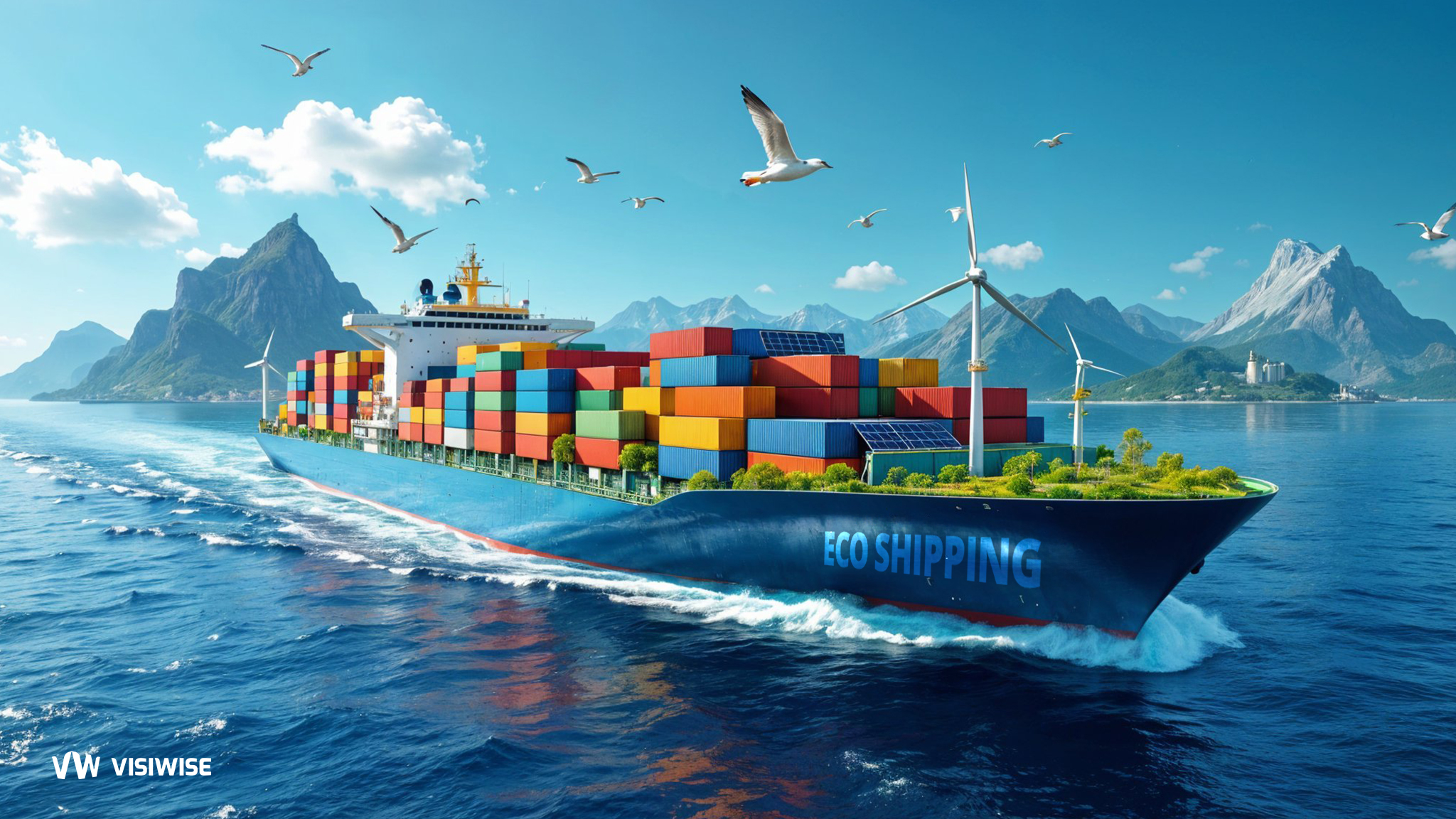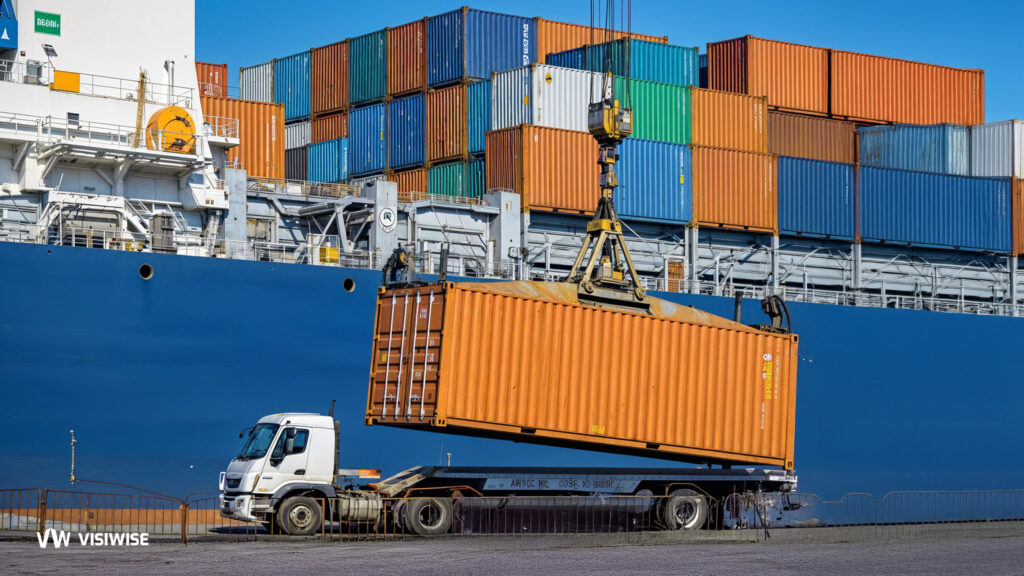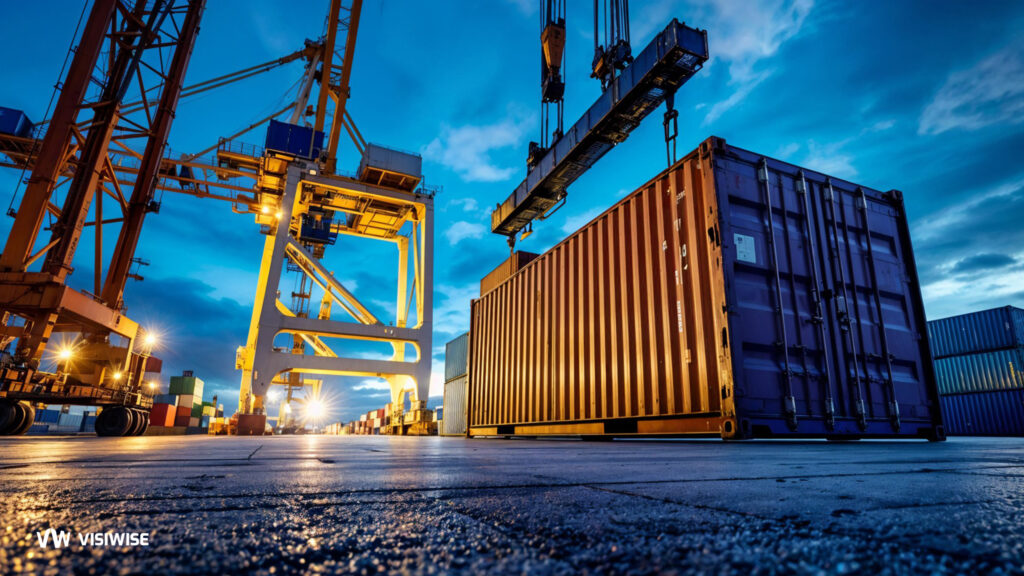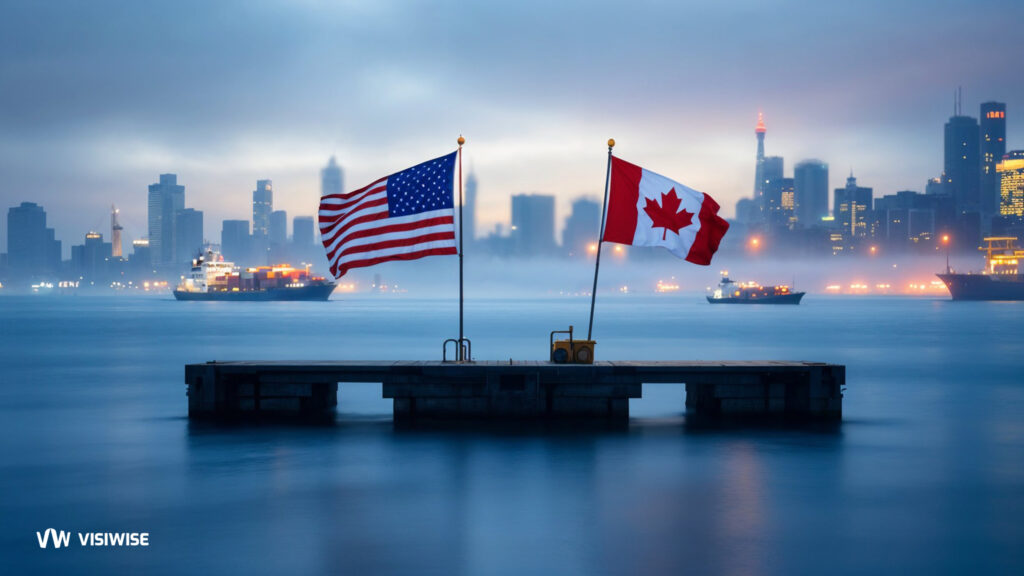For the maritime industry, which is currently going through some disruptive times, the pressure is on to act responsibly and sustainably. Shareholders, governments and industry organizations such as IMO are calling for actions to reduce the carbon footprint of ships, ports and terminals and to devise guidelines and legislation to move the industry in the right direction.
Initiatives such as the mandatory use of low-sulphur fuels, support for alternative fuels such as LNG, various approaches to fuel efficiency such as Just-In-Time (JIT) services, and even full decarbonization of maritime transport are all actions that the industry is taking in response to these calls.
Retail and eCommerce have long had a major environmental impact caused by product manufacturing, the supply chain’s extensive carbon footprint, the extensive use of packaging, and other factors.
As more and more consumers become focused on sustainability, brands understand that they need to take a proactive approach to gain and retain customer loyalty and sales.
Retailers are aware of the need to shift to more environmentally friendly business practices, and given their massive footprint, know they can make a real and measurable global difference.
Here in this blog post we are going to talk about the importance of sustainable shipping and how it impacts the environment.
Introduction to Sustainable Shipping
In order to satisfy the industry’s present demands without endangering the ability of future generations to meet their own, sustainable shipping practices aim to reduce the negative effects of maritime transportation on the environment, society, and economy. It includes using alternative fuels, cutting emissions, increasing energy efficiency, and streamlining logistics to conserve more resources.
The Maritime Industry’s Green Revolution
Shipping moves 90% of global trade—but it also accounts for nearly 3% of the world’s CO₂ emissions. With stricter regulations and rising fuel costs, the industry is rapidly evolving.
1. Cleaner Fuels, Stricter Rules
- IMO 2020 slashed sulphur limits, pushing ships toward low-sulphur fuels, LNG, and biofuels.
- Methanol & ammonia-powered ships are entering the market, with Maersk leading the charge.
- Carbon pricing & emissions trading could soon reshape profitability.
2. Smarter Operations = Less Waste
- Just-In-Time (JIT) arrivals cut idle port time, reducing fuel use by up to 14%.
- Wind-assisted propulsion (like BAR Tech’s WindWings) is making a comeback—saving 11 tons of fuel per day on some routes.
- AI-driven route optimization (see: Bearing AI, Searoutes) slashes unnecessary emissions.
3. The Push for Full Decarbonization
Some companies aren’t waiting for 2050 targets:
- Yara’s electric container ship (fully battery-powered) is already in operation.
- Cargill & Berge Bulk are retrofitting vessels with solar panels & rigid sails.
Sustainable Shipping: Simple Changes, Big Impact
Shipping doesn’t have to cost the earth—literally. With smarter packaging, cleaner transport, and a few creative tweaks, businesses can cut waste, save money, and keep customers happy. Here’s how to make it happen.
1. Rethink Packaging (Because Nobody Needs a Tiny Item in a Giant Box)
We’ve all been there—order a phone case, get a shoebox-sized package stuffed with plastic pillows. It’s wasteful, annoying, and bad for the planet.
Try this instead:
- Use materials that won’t outlive your customers – Recycled cardboard, compostable mailers, even mushroom-based foam.
- Right-size boxes – No more shipping air. Fit packaging to the product.
- Ditch plastic when possible – But if you must use it, make sure it’s recyclable (and tell customers how to recycle it).
Pro tip: Brands like Patagonia use 100% recycled packaging—and their customers love them for it.
2. Carbon Offsets: The "Oops, We Polluted" Fix (That Actually Works)
Even with the best efforts, shipping still burns fuel. Carbon offsets let you balance the scales by funding projects like wind farms or reforestation.
Why bother?
- Customers care – 66% of shoppers prefer brands with sustainable practices.
- It’s affordable – Often just cents per shipment.
- Future-proofs your business – Regulations on emissions are tightening.
Example: Etsy became carbon-neutral by offsetting every delivery—and made a big PR splash doing it.
3. Ground Shipping: Slow and Steady (and Way Cleaner)
Air freight is fast, but it’s also a carbon nightmare. Ground shipping cuts emissions by up to 90% compared to planes.
How to make it work:
- Offer incentives – “Choose ground shipping, get 10% off your next order.”
- Be transparent – Show emissions stats at checkout.
- Set expectations – “Your order will arrive in 3-5 days and save 12kg of CO₂.”
4. The "Naked Shipping" Hack (a.k.a. SIOC)
Why wrap a product in another box when the original packaging works just fine? SIOC (Ships in Own Container) means shipping items in their retail box—no extra layers.
Good for:
- Electronics (think: headphones, small appliances)
- Durable retail packaging
- Cutting costs and waste
Watch out: High-theft items might need discreet outer packaging.
5. Turn Customers into Eco-Allies
People want to do good—they just need a nudge.
Easy ways to encourage green habits:
- Label recycling clearly – “This mailer is 100% curbside recyclable!”
- Suggest reuses – “Save this bubble wrap for gifts or moving day!”
- Reward eco-choices – Discounts for opting out of fast shipping.
Smart move: IKEA lets customers return used packaging for recycling—building loyalty while reducing waste.
6. Smarter Logistics = Fewer Trucks, Less Fuel
Before a single box ships, you can cut waste:
- Bundle orders – Fewer boxes = fewer trips.
- Optimize routes – AI tools like Flexport help plan fuel-efficient deliveries.
- Choose green warehouses – Solar power, LED lighting, EV fleets.
Real results: Walmart reduced empty truck miles by 30%—saving millions in fuel costs.
7. The Bigger Picture: Small Steps Add Up
You don’t need to overhaul everything at once. Start with one change—like switching to recycled mailers or defaulting to ground shipping—and build from there.
Remember:
✅ Customers reward sustainability (hello, brand loyalty!).
✅ Regulations are shifting (get ahead now).
✅ It’s often cheaper (less waste = lower costs).
The Roadblocks to Sustainable Logistics (And How to Overcome Them)
At OGOship, we know firsthand that going green in logistics isn’t as simple as flipping a switch. While the destination—a cleaner, more efficient supply chain—is clear, the journey comes with real hurdles. Here’s a candid look at the top challenges companies face, and how forward-thinking businesses are tackling them.
1. The High Cost of Going Green
Problem:
- Electric trucks cost 2–3x more than diesel equivalents.
- Sustainable packaging (like biodegradable mailers) can be 30–50% pricier upfront.
- Small and mid-sized players often lack capital for big-ticket investments.
Solutions:
✔ Phase-in approach – Start with low-hanging fruit (e.g., route optimization software) before heavy CapEx.
✔ Green financing – Leverage sustainability-linked loans (like Maersk’s $750M green bond).
✔ Long-term math – Highlight ROI: H&M cut transport costs 15% after switching to biofuels.
2. Supply Chain Chaos
Problem:
- A single “unsustainable” supplier can derail your entire ESG report.
- Auditing 100+ vendors for ethical sourcing is a logistical nightmare.
Workarounds:
✔ Tech-driven transparency – Tools like Everledger track materials from mine to warehouse.
✔ Supplier scorecards – Reward partners who meet sustainability KPIs (Walmart’s Project Gigaton model).
✔ Collaborative contracts – Include clauses like "shared emissions targets" with 3PLs.
3. The Wild West of Standards
Problem:
- Is that “carbon-neutral” label legit? Without universal metrics, greenwashing thrives.
- Comparing your progress to competitors is like comparing apples to asteroids.
Fixes:
✔ Adopt proven frameworks – Align with GRI, CDP, or Science-Based Targets initiative (SBTi).
✔ Third-party audits – Companies like EcoVadis certify legitimate claims.
✔ Radical transparency – Like Patagonia’s Footprint Chronicles, show your dirty laundry (and progress).
4. Technology Gaps
Problem:
- Smaller firms lack resources for AI route optimization or EV fleets.
- Legacy systems resist integration with new green tech.
Bridges:
✔ Plug-and-play solutions – Startups like Convoy offer on-demand electric freight.
✔ Partnerships – DHL x Volvo collab scaled up heavy EV trucks faster than solo efforts.
✔ Gov’t incentives – Tap into subsidies (e.g., US Inflation Reduction Act’s 30% EV tax credit).
5. Regulatory Whiplash
Problem:
- IMO’s CII, EU ETS, California’s Advanced Clean Fleets—rules change quarterly.
- Fines for non-compliance can hit 5% of global revenue under EU CSRD.
Survival Tactics:
✔ Dedicated compliance teams – Like Amazon’s Sustainability Science division.
✔ Regtech tools – Sustain.Life auto-updates policies per local laws.
✔ Lobby for clarity – Join groups like Smart Freight Centre to shape practical policies.
6. The "I Want It Green, Fast & Cheap" Paradox
Problem:
- 60% of consumers say they’ll pay more for sustainability—until checkout (McKinsey).
- Next-day delivery’s carbon footprint is 3x standard shipping.
Balancing Act:
✔ Educate customers – Show emissions data at checkout (like Pact’s "Carbon Bill").
✔ Tiered options – "Green delivery" (5 days) vs. "Express" (1 day, +$5 carbon fee).
✔ Loyalty perks – Offer points for choosing slower shipping (Etsy’s "Offset Your Order").
The OGOship Perspective
Yes, sustainable logistics is hard—but inaction is costlier. Companies leading the charge are already seeing:
- 12–18% lower operating costs from efficiency gains (BCG).
- 31% higher valuation multiples vs. ESG laggards (MSCI).
- Future-proofed against coming carbon taxes and bans.
The Future of Sustainable Shipping
The commercial shipping industry is stepping up its sustainability game with exciting developments—from battery-powered fleets and green fuels to smarter ship designs and cutting-edge optimization tech.
Electrification: Smaller Batteries, Bigger Impact
A Berkeley Lab study revealed an interesting insight: by eliminating just 1% of the longest shipping routes, battery sizes could shrink by two-thirds, making electrification far more practical.
The industry is already betting big on this shift. Earlier this year, EST- Floattech , a maritime battery systems developer, secured €4 million from Rotterdam’s Energy Transition Fund. Not to be outdone, Danish shipping giant DFDS pledged €1 billion toward battery-powered vessels, aiming to slash emissions in the English Channel.
Green Fuels: Maersk Leads the Charge
Shipping accounts for 1% of global transport emissions, and Maersk, one of the biggest players, is under serious pressure to clean up its act. The company isn’t just talking—it’s taking bold steps.
Maersk has committed to net-zero shipping by 2040, and part of that plan includes bio-diesel-powered ships under its ECO Delivery program. In 2023 alone, this move cut 683,000 tonnes of GHG emissions—equivalent to 3% of its total ocean transport volume.
But Maersk isn’t stopping there. It’s also adding 25 methanol-powered vessels to its fleet between 2024 and 2027, doubling down on cleaner alternatives.
Smarter Ship Design: Lessons from the America’s Cup
Beyond batteries and biofuels, shipbuilders are turning to aerodynamics and energy efficiency for answers.
Take BAR Technologies, founded by Ben Ainslie, a five-time Olympic medalist and former America’s Cup skipper. The company’s WindWings—giant, rigid sails inspired by racing yachts—help cargo ships cut fuel use by maintaining speed while throttling down engines.
The results? Berge Bulk, a Singapore-based shipper, installed four WindWings on a 300-meter bulk carrier, while Cargill fitted them on its 230-meter ships. After six months, Cargill reported 11 metric tons of fuel saved per day in ideal conditions—a 37% drop in emissions.
BAR Technologies also tackled another problem: the boxy accommodation blocks on ships that create drag. Their solution? The AeroBridge, which splits the block into two streamlined sections connected by an overhead bridge, reducing wind resistance.
Other innovations include optimized cooling systems (saving 25% electricity and 1.5% fuel) and solar panels (cutting fuel use by up to 20%).
Optimization Tech: AI for a Leaner Supply Chain
Going green isn’t just about hardware—it’s also about working smarter. Companies are now using AI-driven tools to:
- Optimize routes (fewer detours, less fuel)
- Reduce empty container trips
- Cut down port idle time
- Minimize packaging waste
Some standout solutions:
- Searoutes – Uses AI to plot the most fuel-efficient paths, factoring in weather, traffic, and ship specs.
- Portchain Connect – Helps ships dock just in time, trimming fuel use and emissions by 6-14%.
- Sofar Ocean’s Wayfinder – Combines real-time weather data with route optimization to save time and fuel.
- Bearing AI – Tracks fleets, optimizes routes, and reduces fuel burn with machine learning.
The Bottom Line
Sustainable shipping is now a competitive necessity, not just compliance. Forward-thinking companies are proving green practices boost profits through 12-30% fuel savings, premium customer demand, and future-proofing against carbon costs. The smart approach? Start practical: optimize routes with AI, test biofuel blends on key routes, or redesign packaging to cut waste. Leaders like Maersk and Amazon show phased investments in clean tech (methanol vessels, EV fleets) deliver ROI while meeting regulations. Every efficiency gain compounds – whether 5% from slow steaming or 15% from wind-assist pilots. The question isn’t if to act, but where to start first for maximum impact.



